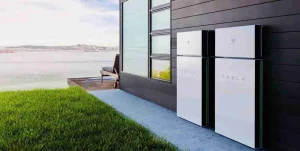Sustainable and Eco-Friendly Home Design for Urban Small Spaces

City living doesn’t have to mean sacrificing sustainability. In fact, small urban spaces offer a unique opportunity to design with the planet in mind—every square foot counts, and so does every eco-conscious choice. Here’s how to create a home that’s as kind to the environment as it is stylish and functional.
Why Small Spaces Are Perfect for Sustainable Design
Think of a tiny apartment like a well-packed suitcase: the less space you have, the more intentional you become. Small homes naturally encourage minimalism, reduced energy use, and smarter material choices. Plus, urban dwellers often walk or bike more, cutting down on carbon footprints before they even step inside.
Key Principles of Eco-Friendly Small Space Design
1. Maximize Natural Light
Big windows aren’t just for Instagram—they slash the need for artificial lighting. Opt for sheer curtains or smart glass that adjusts to sunlight. Mirrors? A no-brainer. Place them opposite windows to bounce light around like a disco ball (minus the electricity).
2. Choose Multi-Functional Furniture
A sofa that folds into a bed, a coffee table with hidden storage, or wall-mounted desks that vanish when not in use—these aren’t just space-savers. They mean fewer pieces to manufacture, ship, and eventually discard. Look for brands using reclaimed wood or recycled metals.
3. Embrace Secondhand and Upcycled Finds
That vintage dresser? It’s got character and a lower carbon footprint than something new. Scour flea markets, Facebook Marketplace, or even alleyway treasures (yes, really). A fresh coat of non-toxic paint can work wonders.
4. Go Big on Indoor Plants
Plants are the ultimate multitaskers: they purify air, reduce stress, and—let’s be honest—make any space look cooler. Snake plants, pothos, and spider plants thrive in low light and forgive forgetful waterers. Pro tip: use repurposed containers as planters.
Materials Matter: What to Use (and Avoid)
Sustainability starts with what your home is made of. Here’s a quick cheat sheet:
| Eco-Friendly Picks | Skip These |
| Bamboo (fast-growing, durable) | Virgin plastic (obviously) |
| Recycled glass countertops | Vinyl flooring (off-gases VOCs) |
| Cork (renewable, sound-absorbing) | Particle board (glue = toxins) |
| Low-VOC paints | Conventional carpet (hello, chemicals) |
Energy Efficiency Hacks for Tiny Homes
Even small tweaks add up in a compact space:
- LED bulbs – Use 75% less energy than incandescents.
- Smart thermostats – Perfect for studios that heat up or cool down fast.
- Insulated curtains – Keep drafts out in winter, block heat in summer.
- Energy Star appliances – Tiny fridge? Make it a super-efficient one.
The “Less Is More” Mindset
Here’s the thing: sustainability isn’t just about what you add—it’s about what you don’t buy. Before purchasing, ask:
- Do I really need this?
- Can it serve multiple purposes?
- Will it last, or is it trendy junk?
Urban minimalism isn’t about deprivation; it’s about curating a space that feels open, intentional, and light on the planet.
Final Thought: Small Space, Big Impact
A sustainable home isn’t a finish line—it’s a mindset. Whether you’re renting a 400-square-foot studio or own a cozy condo, every choice ripples outward. And honestly? That’s kind of empowering.


